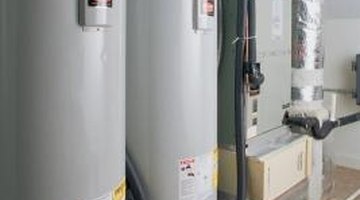Are Electrical Disconnects Required by Code for Water Heaters?
Code requirements must be met when installing electric water heaters. The National Electric Code addresses disconnection requirements for appliances.
Article 422.30

Article 422.30 of the National Electric Code requires that an electric appliance have a means to disconnect it from all ungrounded, or current-carrying, conductors. For some appliances, this is simply a cord that can be unplugged from an outlet.
Article 422.31(a)
Article 422.31(a) of the National Electric Code defines the means of disconnection for permanently connected appliances that are rated not higher than 300 volt-amps or 1/8 horsepower. A permanently connected appliance is one without a cord plugged into an outlet. Appliances that fall under this description can be disconnected by an over-current device, such as a circuit breaker or a fuse, without any additional means of disconnection required. Electric water heaters exceed the 300 volt-amp requirement of this section and are subject to additional requirements.
Article 422.31(b)
Article 422.31(b) of the National Electric Code expands on section (a) to include the requirements for permanently connected appliances that exceed 300 volt-amps and/or 1/8 horsepower. This section covers electric water heaters that lack a cord for plugging into an outlet; it states that the over-current device can serve as the disconnecting means only if it is visible from the appliance or if the over-current device is capable of being locked in the open (off) position. If the over-current device does not meet this provision, than an additional disconnect must be provided that does meet the requirement.
Advisory
The National Electric Code is a guide that localities may adopt as part of their local building codes. Amendments are sometimes made by localities. Always check with your local code enforcement officials before modifying an electrical system.
References
- International Association of Certified Home Inspectors; Electric Water Heater Disconnect; August 7, 2010
- "National Electrical Code 2011 (National Fire Protection Association National Electrical Code)"; National Fire Protection Association; 2010
Writer Bio
Suburban Chicago native Chris Edwards, began writing for his school newspaper in 1991. He has written self help and how to articles on photography for numerous photography websites. Self taught, Edwards’ extensive knowledge of photography comes from years of passionate pursuit of the art. He studied business management at Triton College.
Photo Credits
- Comstock/Comstock/Getty Images
More Articles



